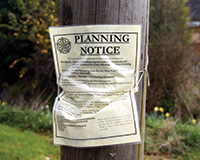 The question as to whether build-to- rent developments should form their own use class has divided opinion, ever since Sir Adrian Montague wrote Private rented homes: review of the barriers to institutional investment in 2012.
The question as to whether build-to- rent developments should form their own use class has divided opinion, ever since Sir Adrian Montague wrote Private rented homes: review of the barriers to institutional investment in 2012.
Some argue a new use class would clearly distinguish the sector from the owner-occupied market, helping it grow and become established. Others say it might deter further investment, because of fears about the ease of any future exit from a scheme.
People’s views largely depend on their current position in the market. Yet the lack of a consensus means the government is unlikely to act.
Personally, I still believe that the debate about a use class is a distraction from the need to focus on the single biggest challenge for the sector: showing why long-term investment in purpose-built homes to rent is a vital part of tackling the wider housing crisis.
Most politicians don’t really understand what distinguishes build to rent from buy to let, never mind the public. Tackling that ignorance should be the sector’s overwhelming priority.
Mix it all up
Indeed, in my view, planners, valuers and the wider property world need to rethink the modern role of Use Class Orders. The static notion of valuing buildings for a single use is being undermined by both policy changes and the real world.
In terms of policy, we’ve had the extensive use of Permitted Development Rights, which have helped to convert thousands of office buildings into housing. The new rules on a brownfield register and a presumption for residential development is going to have a similar effect on many industrial sites.
Meanwhile, people’s working habits are changing. Over 14% of the workforce are now homeworkers, as the internet enables us to work at home, in a coffee shop or on the train. So the original role of Use Class Orders in separating where we live, work, learn and play is becoming less and less important.
Indeed, strict zoning by specified use is holding us back in rethinking how we both build the homes we need and reduce congestion and urban pollution. I’m not suggesting that there won’t be any need for some designations, but rather that we also need to establish planning and valuation methods that recognise the increasing integration of our lives and enable our built environment to adapt and change as we do.
Environmental considerations
Indeed, some might argue that the activity in a location is less important, in planning terms, than its immediate environmental impact, whether in terms of pollution or noise.
The value of the location would then focus on what really matters, namely the connectivity and accessibility of that place, with planning perhaps operating only to rule out certain activities, rather to specify a use.
This new approach could be incorporated most easily into the planning for new settlements and for the large-scale urban regeneration schemes planned in London and other major
British cities.
It won’t be easy and will meet resistance from some valuers, investors and planners alike. But the truth is that the old 20th-century models of separating our working and home lives
in different locations is looking increasingly out of date.
Mark Prisk is a member of the House of Commons Communities and Local Government Select Committee










